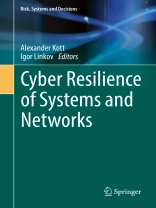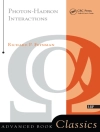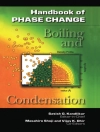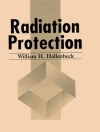This book introduces fundamental concepts of cyber resilience, drawing expertise from academia, industry, and government. Resilience is defined as the ability to recover from or easily adjust to shocks and stresses. Unlike the concept of security - which is often and incorrectly conflated with resilience — resilience refers to the system’s ability to recover or regenerate its performance after an unexpected impact produces a degradation in its performance. A clear understanding of distinction between security, risk and resilience is important for developing appropriate management of cyber threats.
The book presents insightful discussion of the most current technical issues in cyber resilience, along with relevant methods and procedures. Practical aspects of current cyber resilience practices and techniques are described as they are now, and as they are likely to remain in the near term.
The bulk of the material is presented in the book in a way that is easily accessible to non-specialists. Logical, consistent, and continuous discourse covering all key topics relevant to the field will be of use as teaching material as well as source of emerging scholarship in the field. A typical chapter provides introductory, tutorial-like material, detailed examples, in-depth elaboration of a selected technical approach, and a concise summary of key ideas.
Spis treści
Chapter 1. Introduction.- Part 1. Quantifying Cyber Resilience.- Chapter 2. Metrics Based on the System Performance Perspective.- Chapter 3. Metrics Based on the Mission Risk Perspective.- Part 2. Assessment and Analysis of Cyber Resilience.- Chapter 4. Frameworks and Best Practices.- Chapter 5. Analysis of Dependencies.- Chapter 6. Applying Percolation Theory.- Chapter 7. Modeling the Impact of Cyber Attacks.- Chapter 8. Modeling and Simulation Approaches.- Part 3. Enhancing Cyber Resilience.- Chapter 9. Systems Engineering Approaches.- Chapter 10. Defense Techniques.- Chapter 11. Managing Human Factors.- Chapter 12. Rule-Making for Insider Threat Mitigation.- Chapter 13. Biologically Inspired AI Techniques.- Chapter 14. Economic Effectiveness of Mitigation and Resilience.- Part 4. Cyber Resilience in Selected Classes of Systems and Networks.- Chapter 15. Regional Critical Infrastructures.- Chapter 16. Internet of Things.- Chapter 17. Smart Cities.- Chapter 18. Transportation Networks.- Chapter 19. Supply Chains.
O autorze
Dr. Alexander Kott serves as the Chief, Network Science Division, Army Research Laboratory headquartered in Adelphi MD. In this position, he is responsible for fundamental research and applied development in performance and security of both tactical mobile and strategic networks. He oversees projects in network performance and security, intrusion detection, and network emulation.
Between 2003 and 2008, Dr. Kott served as a Defense Advanced Research Programs Agency (DARPA) Program Manager responsible for a number of large-scale advanced technology research programs. His earlier positions included Technical Director with BBN Technologies, Cambridge, MA; Director of R&D at Logica Carnegie Group, Pittsburgh, PA; and IT Research Department Manager at Allied Signal, Inc., Morristown, NJ. Dr Kott received the Secretary of Defense Exceptional Public Service Award and accompanying Exceptional Public Service Medal, in October 2008.
He earned his Ph D from the University of Pittsburgh, Pittsburgh PA in 1989; published over 70 technical papers; and co-authored, and edited six technical books.
Dr. Igor Linkov is the Risk and Decision Science Focus Area Lead with the US Army Engineer Research and Development Center. He is an Adjunct Professor of Engineering and Public Policy at Carnegie Mellon University and Professor of Practice in Electrical and Computer Engineering at the University of Connecticut. Dr. Linkov has managed multiple risk assessments and risk management projects in the areas of environmental management, cybersecurity, critical infrastructure, climate change, and systems vulnerability. He is currently developing resilience assessment and management approaches for infrastructure and cyber systems. As a one of the leaders of the USACE Resilience PDT, he is working on developing the USACE Resilience Roadmap and is part of several Interagency Committees and Working Groups tasked with developing resilience metrics and resilience management approaches. He has published widely on environmental policy, environmental modeling, and risk analysis, including fourteen books and over 250 peer-reviewed papers and book chapters. Dr. Linkov is Society for Risk Analysis Fellow and recipient of 2005 Chauncey Starr Award for exceptional contribution to Risk Analysis and 2014 Outstanding Practitioner Award.












